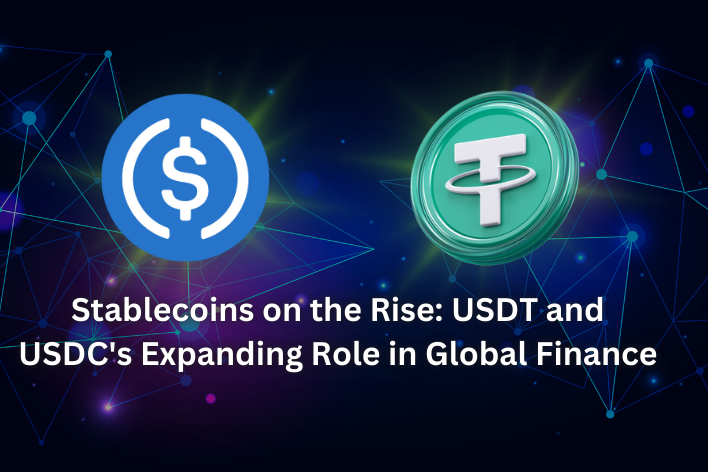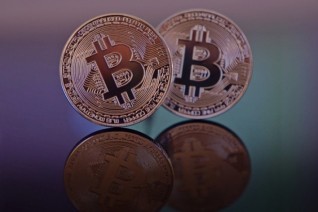Stablecoins on the Rise: USDT and USDC's Expanding Role in Global Finance
Introduction:
Stablecoins, a category of cryptocurrencies designed to maintain a stable value, have rapidly gained prominence in the digital finance landscape. Unlike traditional cryptocurrencies like Bitcoin or Ethereum, which are known for their volatility, stablecoins are typically pegged to a stable asset, such as the US dollar, making them less susceptible to market fluctuations. This stability has positioned them as a reliable medium of exchange and store of value, particularly in the rapidly evolving world of decentralized finance (DeFi) and cross-border transactions.
In recent months, the circulation of leading stablecoins such as USDT (Tether) and USDC (USD Coin) has surged significantly. These stablecoins have become indispensable tools for facilitating global payments, offering a cost-effective and efficient alternative to traditional remittance services. Additionally, their role in the DeFi ecosystem has expanded, where they are widely used for lending, borrowing, and providing liquidity. As stablecoins continue to integrate into global finance, their influence is set to reshape the way we think about money and digital transactions.
The Rise of Stablecoins
The rapid rise of stablecoins, particularly USDT and USDC, can be attributed to several key factors that have driven their increasing circulation and adoption. As of mid-2024, the market capitalization of USDT has surged to over $84 billion, while USDC has reached approximately $28 billion, underscoring their growing importance in the crypto ecosystem. One of the primary drivers behind this growth is the inherent stability of these assets, which are typically pegged to the US dollar. This stability makes them an attractive option for investors and users seeking to avoid the volatility associated with other cryptocurrencies.
Additionally, stablecoins have gained confidence as a reliable store of value and medium of exchange. Their integration into decentralized finance (DeFi) platforms has further fueled their usage, allowing users to engage in lending, borrowing, and trading with minimized risk. Moreover, stablecoins have become essential for cross-border payments, offering a faster, cheaper, and more efficient alternative to traditional financial systems. The combination of these factors has solidified stablecoins' position as a cornerstone of the modern financial landscape, driving their widespread adoption and circulation across the globe.
Cross-Border Payments
USDT and USDC are revolutionizing cross-border payments by offering a faster, more efficient, and cost-effective alternative to traditional remittance services. Unlike conventional banking systems that often involve high fees, lengthy processing times, and intermediaries, transactions made with stablecoins can be completed in minutes, with significantly lower costs. This efficiency has made stablecoins particularly popular in regions where access to traditional financial services is limited or expensive.
For instance, in countries like Venezuela and Nigeria, where economic instability and currency devaluation are significant issues, stablecoins like USDT and USDC provide a reliable means for citizens to transfer value across borders without worrying about currency fluctuations. These stablecoins enable users to send and receive funds globally, bypassing the often unreliable and expensive local banking systems. Additionally, their growing acceptance on global trading platforms and DeFi networks further enhances their utility in cross-border transactions. As a result, USDT and USDC are not only transforming how money moves across borders but are also empowering individuals in developing economies by providing them with a stable, accessible financial tool.
Stablecoins in DeFi
Stablecoins like USDT and USDC play a crucial role in the decentralized finance (DeFi) ecosystem, serving as the backbone for various financial activities within this rapidly growing sector. Their stable value, pegged to traditional fiat currencies like the US dollar, makes them ideal for DeFi applications, where minimizing volatility is key. In lending and borrowing protocols, stablecoins are often used as collateral or loan assets, providing users with a reliable means to earn interest or obtain liquidity without exposing themselves to the price swings of other cryptocurrencies.
Additionally, USDT and USDC are widely used in liquidity pools, where they help facilitate trading and market-making on decentralized exchanges (DEXs). These pools rely on stablecoins to maintain stable trading pairs, ensuring smooth and predictable transactions for users. The impact of stablecoins on DeFi growth is evident in the exponential increase in their usage. For example, as of 2024, over 70% of all transactions on leading DeFi platforms involved stablecoins, highlighting their central role in this ecosystem. A case study from Aave, a popular DeFi protocol, showed that nearly 60% of its total value locked (TVL) involved stablecoin deposits, underscoring their importance in providing liquidity and stability to the platform. Through their integration into these key DeFi functions, stablecoins have become indispensable in supporting the infrastructure and continued expansion of decentralized finance.
Regulatory Landscape
The regulatory landscape surrounding stablecoins is evolving rapidly as governments and financial authorities across the globe recognize their growing significance in the financial system. Countries are adopting varied approaches to stablecoin regulation, reflecting differences in their financial frameworks and attitudes towards digital currencies. In the United States, regulators have focused on ensuring that stablecoins like USDT and USDC are adequately backed by reserve assets, with proposals for more stringent oversight and transparency requirements. The EU has taken a similar path with its Markets in Crypto-Assets (MiCA) regulation, which aims to standardize the treatment of stablecoins across member states, ensuring consumer protection and financial stability.
In contrast, some countries, such as China, have taken a more restrictive stance, banning the use of stablecoins alongside other cryptocurrencies as part of broader measures to control digital assets. Meanwhile, nations like Singapore and Switzerland have embraced stablecoins, offering clear regulatory frameworks that promote innovation while maintaining financial integrity.
Recent developments include discussions by the Financial Stability Board (FSB) on global stablecoin standards, which could lead to international agreements on their regulation. For USDT and USDC, this regulatory scrutiny could lead to increased compliance costs but also greater legitimacy in the eyes of institutional investors. The evolving regulatory environment is likely to shape the future of stablecoins, balancing the need for innovation with the demands of financial stability and consumer protection.
Conclusion:
USDT and USDC have emerged as pivotal players in the global finance ecosystem. As we've explored, Tether's USDT provides essential liquidity and stability, serving as a bridge between traditional financial systems and the burgeoning world of cryptocurrencies. Similarly, USD Coin (USDC) stands out for its transparency and regulatory compliance, reinforcing its role as a reliable stablecoin in the decentralized finance (DeFi) landscape.
Both USDT and USDC are not only enhancing the efficiency of cross-border payments but also underpinning a vast array of DeFi applications, from lending and borrowing to yield farming. Their growing adoption signals a shift towards a more integrated financial system where digital assets and traditional currencies coexist seamlessly.
Looking ahead, the future of stablecoins appears promising. As technological advancements and regulatory frameworks continue to evolve, USDT and USDC are well-positioned to drive innovation and stability in the financial sector. Their influence is set to expand, potentially reshaping how we conduct transactions, manage assets, and interact with global finance.





